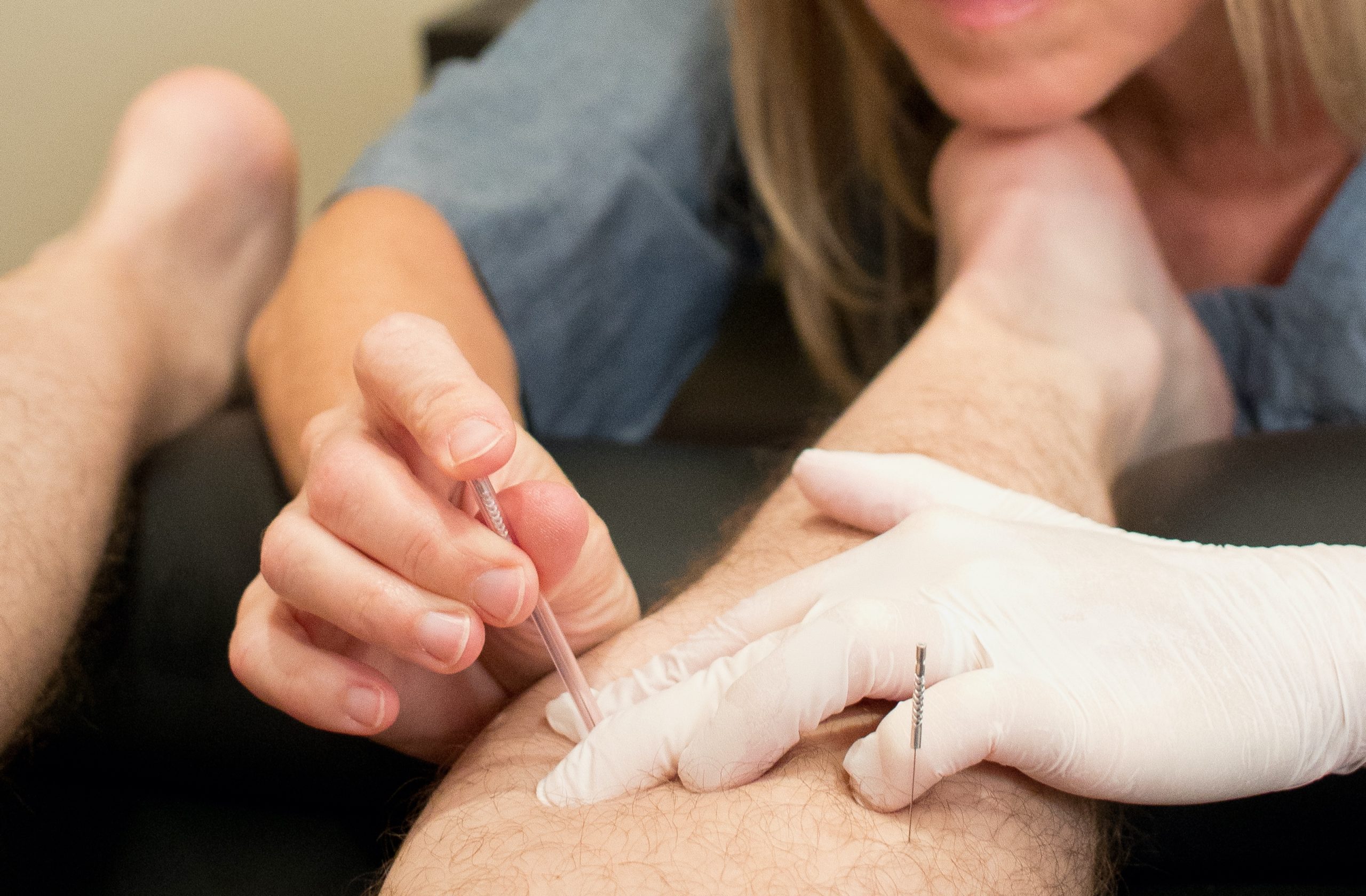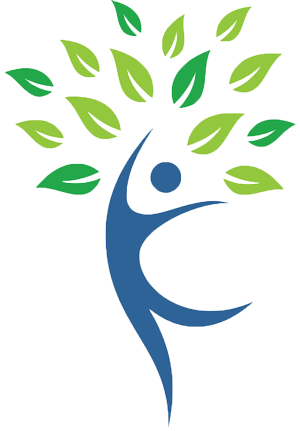
Dry Needling
Dry Needling is a skill based technique used to help dysfunctional muscles improve their function.
What Is Dry Needling?
American Physical Therapy Association defines Dry Needling as “… a skilled intervention that uses a thin filiform needle to penetrate the skin and stimulate underlying myofascial trigger points, muscular and connective tissues for the management of neuromusculoskeletal pain and movement impairments. DN is a technique used to treat dysfunctions in skeletal muscle, fascia, connective tissue and to diminish persistent peripheral nociceptive input, and reduce or restore impairments of body structure and function leading to improved activity and participation.”
To put this into normal terms, Dry Needling is a skill based technique used to help dysfunctional muscles improve their function. Simply explained, muscles contract and shorten or relax and lengthen. If the muscle tissue is not functioning well due to a muscle spasm, tightness, being overstretched, misused, or overused, it can result in pain and faulty movement. This small needle is inserted into the tissue. It usually does not hurt. It may feel awkward because your muscle’s response is to twitch, which is what I want it to do. I may also add electrical stimulation to the needle to promote twitching. Why? I want the muscle to contract, so it can then relax. This will help with circulation, breaking up muscle spasms, and stimulate the surrounding tissues (tendons, fascia, nerves). The goal of Dry Needling is pain relief, to improve motion and function and a quicker recovery.
Common questions:
What if I hate needles?
Who doesn’t? We are used to having shots- injections that are putting a fluid of some sort into our body. The gauge (size of the needle) for a shot or vaccine is much larger. There is a reservoir needed for the medicine to flow through the needle. Nothing is injected into you with Dry Needles. We are also used to giving blood, where again, the gauge is larger to make a reservoir so your blood can be pulled out. Maybe you had an IV in the past that was not comfortable. Again, there is a reservoir and the use of fluid. IVs are directly into your vein- not your muscle tissue. Dry Needles are incredibly thin.
What age groups can have Dry Needling?
I have performed Dry Needling for kids under 10 and adults over 90.
What if I panic?
Breathe. Try to not let a treatment that most likely really help you freak you out. I’m pretty good at keeping patients calm.
Do you reuse the needles?
Ewww, no. Each needle is in a sterile pack.
Do you wear gloves?
Yes. Clean ones.
How do you (Karen) know how to do Dry Needling?
I went through Level 1, 2, and 3 Training for Dry Needling. That means I am trained for several different muscles, including tissue surrounding the spine, the face, the feet, hands, and all body regions. I have advanced training and am certified in the advanced technology of electrical stimulation units. The certifications include hours of classroom, hands-on training, exams that are written, and in-person practicals.
What are the side effects?
You may be sore from the muscle twitch and the general molecular change that happens with this intervention. Sore, but not the pain that brought you to me. You may have a bruise. You may feel systematically different. Some patients feel very emotional after their first session. Patients have reported crying, having a large feeling of relief, or being more emotionally in tune. Some patients feel a bit ‘lightheaded’ or slightly ‘out of it’ for a short while. You will still be safe to stand, walk, drive, work, and function. The side effects are mild and temporary. It is also common to have zero side effects.
Are there any risks to having Dry Needling?
Yes. There is a small risk of a pneumothorax. This means the needle went into your lung tissue. The statistics are very, very low and the recovery is usually self-healing. Most of the time, I am not using this technique around your lung field. When I plan to do so, I will educate you more on the safety techniques and preventative measures.
Will I bleed?
Usually not. Sometimes there will be a spec or drop of blood.
Can I have Dry Needling performed if I am on blood thinners?
Blood thinners are a precaution for me to perform this intervention. I will do a ‘test needle’ and see if your body is okay with this. In my experience, my patients on blood thinners have done well with no bleeding or bruising issues.
How frequently can I have Dry Needling?
That depends. It depends on what your outcome is after having a treatment. Often my methodology changes as your symptoms and body change.
How long does Dry Needling take?
It varies. It usually takes me longer to explain it than to actually perform it on you! If you have never had Dry Needling by me or another practitioner, I usually do a quick few needles- or sometimes just one. In that case, it takes a few minutes or less. Other times I will hook up an electrical stimulation unit so your muscles will contract for up to 10 minutes. This will all be explained prior to any needling. I will not just ‘shove’ needles into you!
Why would I use Dry Needling on you?
I have found that Dry Needling is one of the most effective interventions to help relieve pain, improve muscle function, and get patients back to feeling and moving better. Follow-up is needed- such as tissue input with graston, massage, myofascial release, stretching, motor control, strength, or other types of physical therapy that are appropriate to enhance the Dry Needling results.
Common Areas To Be Dry Needled:
- Glutes
- Central spine both cervical and low back
- Thighs and hamstrings
- Upper traps
- Forearms
- Calf muscles
- Hands
- Face
- Scalp
“Dry needling can be utilized for numerous musculoskeletal, neurological, acute, and chronic issues,”
Explore Additional Services
Physical
Therapy
Kinesio Taping
Myofascial
Release
Contact Me
I am available by text, phone, or email.
Tell me your story; I will hear you.
Tell me your goals; I will guide you to them.
Tell me your barriers; we will overcome them.
Text or Call Me
Email Me
Visit Me
1660 South Albion Street
Floor 7, Suite 719
Denver, CO 80222
